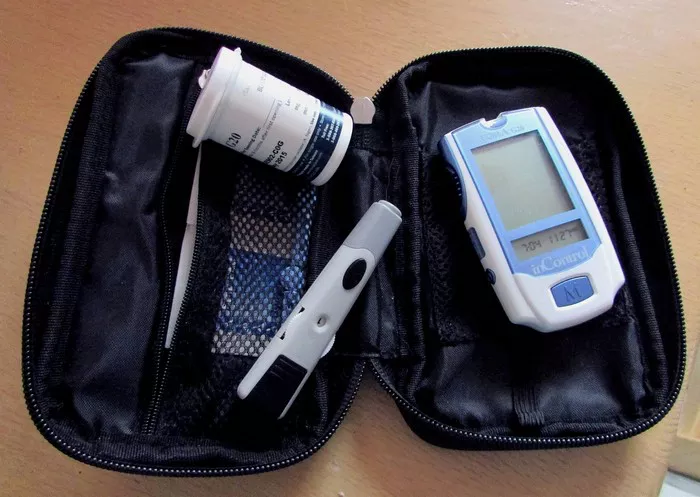Diabetes mellitus, a chronic metabolic disorder characterized by hyperglycemia, imposes significant burdens on individuals and healthcare systems worldwide. Understanding the diverse clinical features of diabetes mellitus is crucial for early detection, accurate diagnosis, and effective management of this complex condition. In this comprehensive article, we delve into the multifaceted spectrum of clinical features associated with diabetes mellitus, exploring their diverse presentations, underlying mechanisms, diagnostic implications, and therapeutic considerations.
Introduction to Diabetes Mellitus:
Diabetes mellitus encompasses a group of metabolic disorders characterized by chronic hyperglycemia resulting from defects in insulin secretion, insulin action, or both. The primary hormone involved in glucose regulation, insulin plays a pivotal role in facilitating glucose uptake by cells, promoting glycogen synthesis, and inhibiting hepatic glucose production. Dysfunction of the insulin-secreting pancreatic beta cells, peripheral insulin resistance, and impaired glucose utilization contribute to the pathogenesis of diabetes mellitus.
Types of Diabetes Mellitus:
Diabetes mellitus is classified into several subtypes, each with distinct etiological factors, clinical manifestations, and management strategies. The main types of diabetes mellitus include:
1. Type 1 Diabetes: Characterized by autoimmune destruction of pancreatic beta cells, resulting in absolute insulin deficiency.
2. Type 2 Diabetes: Marked by insulin resistance, impaired insulin secretion, and relative insulin deficiency.
3. Gestational Diabetes Mellitus (GDM): Occurs during pregnancy and is associated with insulin resistance and impaired beta cell function.
4. Other Specific Types: Include genetic forms such as maturity-onset diabetes of the young (MODY), secondary diabetes due to underlying conditions, and diabetes associated with certain medications or chemical exposures.
Clinical Features of Diabetes Mellitus:
The clinical features of diabetes mellitus are diverse and encompass a wide range of systemic manifestations affecting various organ systems throughout the body. These clinical features serve as key diagnostic clues and therapeutic targets in the management of diabetes mellitus. The main clinical features of diabetes mellitus include:
1. Hyperglycemia:
- Hyperglycemia, defined as elevated blood glucose levels, is the hallmark feature of diabetes mellitus.
- Mechanism: Dysregulation of insulin secretion, insulin action, or both leads to impaired glucose uptake by cells and increased hepatic glucose production.
- Clinical Significance: Persistent hyperglycemia contributes to the development of acute and chronic diabetes-related complications, including diabetic ketoacidosis (DKA), hyperosmolar hyperglycemic state (HHS), microvascular complications (e.g., retinopathy, nephropathy, neuropathy), and macrovascular complications (e.g., cardiovascular disease, stroke).
2. Polyuria (Excessive Urination):
- Polyuria refers to increased urine production and frequent urination, a common manifestation of diabetes mellitus.
- Mechanism: Hyperglycemia exceeds the renal threshold for glucose reabsorption, leading to glucose spillage into the urine and osmotic diuresis.
- Clinical Significance: Polyuria is a cardinal symptom of diabetes mellitus and may result in dehydration, electrolyte imbalances, and nocturia.
3. Polydipsia (Excessive Thirst):
- Polydipsia manifests as excessive thirst and fluid intake, often accompanying polyuria in diabetes mellitus.
- Mechanism: Dehydration and extracellular fluid volume depletion trigger thirst receptors in the hypothalamus, stimulating sensations of thirst.
- Clinical Significance: Polydipsia serves as a compensatory mechanism to maintain hydration in response to fluid losses associated with polyuria.
4. Polyphagia (Excessive Hunger):
- Polyphagia is characterized by increased appetite, hunger, and food intake despite elevated blood glucose levels.
- Mechanism: Cellular energy deprivation due to insulin resistance or insulin deficiency triggers hunger signals and stimulates appetite.
- Clinical Significance: Polyphagia reflects metabolic disturbances in diabetes mellitus and may contribute to weight gain and hyperphagia.
5. Weight Loss:
- Unintentional weight loss may occur in individuals with diabetes, particularly in type 1 diabetes or poorly controlled type 2 diabetes.
- Mechanism: Insulin deficiency or insulin resistance leads to increased breakdown of fat and protein stores for energy.
- Clinical Significance: Weight loss in diabetes may result from muscle wasting, fluid loss, and metabolic changes associated with chronic hyperglycemia.
6. Fatigue and Weakness:
- Fatigue, weakness, and lethargy are common symptoms reported by individuals with diabetes, often related to fluctuations in blood glucose levels and metabolic disturbances.
- Mechanism: Chronic hyperglycemia, insulin resistance, and cellular energy deprivation contribute to fatigue and reduced physical endurance.
- Clinical Significance: Fatigue may impact daily functioning, quality of life, and adherence to self-management behaviors such as physical activity and medication adherence.
7. Blurred Vision:
- Blurred vision or changes in visual acuity may occur in individuals with diabetes, particularly when blood glucose levels are poorly controlled.
- Mechanism: Hyperglycemia and osmotic changes in the lens of the eye lead to alterations in refractive index and visual disturbances.
- Clinical Significance: Blurred vision may indicate the presence of diabetic retinopathy, macular edema, or other diabetes-related eye complications requiring prompt evaluation and management.
8. Slow Wound Healing:
- Delayed wound healing and impaired tissue repair are common manifestations of diabetes, attributable to microvascular and macrovascular complications.
- Mechanism: Chronic hyperglycemia, impaired angiogenesis, and reduced immune function contribute to impaired wound healing in diabetes.
- Clinical Significance: Slow wound healing increases the risk of infections, ulcers, and diabetic foot complications, necessitating meticulous wound care and preventive measures.
9. Recurrent Infections:
- Recurrent infections, particularly of the skin, urinary tract, and oral cavity, are more common in individuals with diabetes due to impaired immune function and compromised host defense mechanisms.
- Mechanism: Hyperglycemia impairs neutrophil function, macrophage activity, and humoral immunity, predisposing individuals to infections.
- Clinical Significance: Recurrent infections may serve as early indicators of undiagnosed or poorly controlled diabetes and require comprehensive evaluation and management to prevent complications.
10. Neuropathy:
- Diabetic neuropathy encompasses a spectrum of peripheral and autonomic nerve disorders resulting from long-term hyperglycemia and microvascular damage.
- Mechanism: Hyperglycemia and metabolic derangements lead to axonal degeneration, demyelination, and impaired nerve function.
- Clinical Significance: Neuropathy manifests as sensory deficits, motor dysfunction, autonomic dysfunction (e.g., gastroparesis, erectile dysfunction), and neuropathic pain, impacting quality of life and functional status in individuals with diabetes.
Conclusion:
The clinical features of diabetes mellitus are diverse and encompass a wide range of systemic manifestations reflecting underlying metabolic disturbances, hormonal imbalances, and end-organ complications. Recognizing and addressing these clinical features is essential for early detection, accurate diagnosis, and effective management of diabetes mellitus. By adopting a holistic approach to diabetes care that addresses both glycemic control and comprehensive management of associated comorbidities and complications, healthcare providers can optimize outcomes and improve the quality of life for individuals living with diabetes mellitus.

























